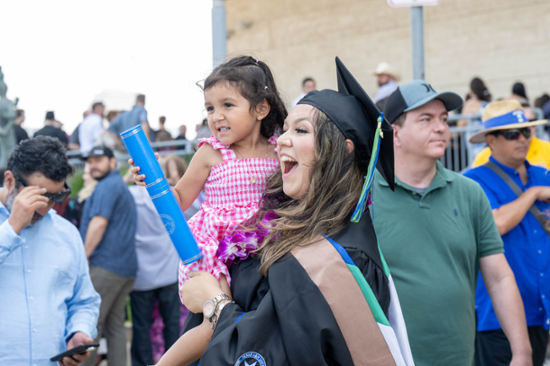A&M-Corpus Christi’s Lone Star UAS, NASA, Usher in New Era of Aviation
CORPUS CHRISTI, Texas – The skyline of downtown Corpus Christi has been dotted with drone activity this summer, thanks to a partnership between the Texas A&M University-Corpus Christi Lone Star UAS Center of Excellence & Innovation and NASA. The two entities, which have worked together for nearly five years, are entering the final stages of testing for their Unmanned Aircraft Systems Traffic Management (UTM) project for the purposes of safely integrating UAS into the National Airspace System.
“According to FAA market research, there will be more than 800,000 small UAS operating in the National Airspace in the next 10 years, so there needs to be a way to test drone traffic management in an urban environment,” said Mike Sanders, Acting Executive Director of Lone Star UAS. “Whether it’s for package delivery, bridge or pipeline inspection, or remotely piloted air taxis, this UTM project is integral to creating the robust and sophisticated software needed to support this emerging technology.”
In February 2019, NASA selected Lone Star UAS as one of only two test sites to spearhead UTM testing, with Reno, Nevada, being named as the other test site. Corpus Christi was selected for numerous reasons, said Ronald Johnson, UTM Project Manager with NASA’s Ames Research Center in Silicon Valley.
“The Gulf Coast is a challenging environment for drones – the temperature, humidity, winds –certainly Corpus Christi has a good combination of those things,” said Johnson. “Plus, we’ve got a history of working with Lone Star UAS in previous UTM testing and we’re pleased that Lone Star and the City of Corpus Christi have stepped up to this challenge.”
Rehearsal flights took place in July in various areas in and around downtown Corpus Christi, with official testing from Aug. 12-23. There were more than 100 participants involved in the project, including more than two dozen student interns from Texas A&M University-Corpus Christi.
“This high-profile event highlights Corpus Christi and Texas A&M University-Corpus Christi as an important center for emerging technology. We, at A&M-Corpus Christi, are proud of the opportunity to bring this kind of recognition to our city,” said President Quintanilla. “But what we’re most proud of is the hands-on learning opportunity this brings to our students. A&M-Corpus Christi has been named one of the 10 best places in the country to study unmanned aircraft systems and the students that come to the Island University are getting an experience unlike anywhere else in the country.”
Johnson likens the speed of the project to a crawl, walk, run – with the current phase of testing being a “run.”
“We’re at the beginning of a new era in aviation and things are moving quickly, in a lot of different directions,” Johnson said. “Five years ago, when we kicked this off… we were controlling a few drones only in a rural area where there’s low risk, hardly any people – just cows and rattlesnakes. And now, we’re in an urban environment, the ultimate level of testing, and at each level in between, we’ve added more functionality and sophistication.”
Advancements include better cameras, high quality GPS, onboard radios, systems for detect and avoid, and more.
“What you see over the period of this experiment is a great period of learning,” said Jay Dryer, Deputy Associate Administrator for Programs – Aeronautics at NASA Headquarters. “Ultimately, the things that we gather… are going to be transitioned to our partners in the FAA and open the market for small UAS for the benefit of safety, to offer economic capabilities, and generally improve quality of life.”























































